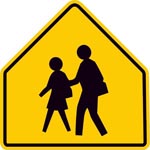Center, Nebraska, Children, Youth, Families, and Schools

Nebraska Center for Research on Children, Youth, Families, and Schools: Faculty Publications
Document Type
Article
Date of this Version
2010
Citation
Kostlelnik, M., Schroeder, D., Durden, T., Warner, M., Purcell, S., Krumbach, E., Hanna, J., Nelson, M., & DeFrain, J. (2010, May). Helping Children Resolve Conflict: Conflict Mediation Model. NebGuide G2014. University of Nebraska–Lincoln Extension, Institute of Agriculture and Natural Resources.
Abstract
During conflict mediation children learn skills necessary to reach peaceful resolutions. These skills involve communication, compromise, the ability to see how different aspects of a dispute are related, and the ability to consider their own perspective as well as that of another person. At first children need a great deal of support to proceed all the way to a negotiated settlement. The adult mediator provides this support, serving as an instructor. As children learn problem-solving words and procedures, they become increasingly capable of solving problems for themselves. There is evidence that these childhood learnings are maintained throughout the adult years. Like other social skills, children require numerous opportunities to practice conflict resolution under the guidance of a more experienced person.
This eight-step conflict/mediation model can help adults successfully guide children through conflict resolution.
Adults play an important role in helping children develop social skills. Children between ages 3 and 10 need to have positive give-and-take social interactions. They need mini-lessons on how to cultivate positive interactions between themselves and others in their social network.
Anyone who has more than two children in their care will encounter conflict. With practice using the eight-step conflict resolution/mediation model you can successfully guide children through resolving their conflicts. This model can be used with children who have developed skills and can verbalize their feelings, usually age three or older.
The role of the adult/mediator in this model is very important. Key points to remember when implementing the model with the children are:
• Physical contact is very important. Hold the children. You may rub their backs during the interaction to reinforce your support for each child. (Not all children want to be touched in a conflict situation. If you have noted, on a number of occasions, the child is uncomfortable with being touched, you may want to look into it further.)
• Ask, “What happened here?” Make sure each child is given uninterrupted time to explain their view of the situation, within boundaries.
• Accept and reinforce the solution agreed on by the children. It may not make sense to you.
• Remain calm at all times during the process. Use simple, concrete language. Paraphrase any language that is hurtful.
• End with an open-ended question. Example: “Neither one of you are getting what you want. What can we do to solve this problem?”
•Give the children lots of time to form their thoughts and speak. A question that can be answered with yes or no is not an open-ended question.
Included in
Public Affairs, Public Policy and Public Administration Commons, Social Work Commons, Sociology Commons


Comments
Copyright University of Nebraska 2010